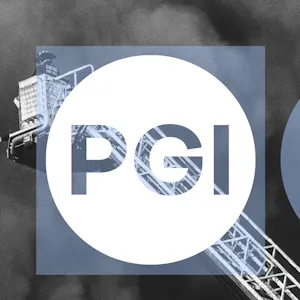Emerging threats

We support organisations striving to build a trustworthy, safe online environment where users can engage authentically in their communities.
Cross-sector corporatesWe support international government organisations and NGOs working to provide infrastructure or improve the capabilities, security and resilience of their nation.
International programmes and developmentWe support commercial organisations operating in a digital world, seeking to protect their reputation and prevent business disruption caused by cyber attacks and compliance breaches.
UK government and public sectorWe support UK government organisations responsible for safeguarding critical infrastructure, preserving public trust, and maintaining national security.



The world would be a very different place without industrial automation and Supervisory Control and Data Acquisition (SCADA) systems serve as the backbone. SCADA systems orchestrate and regulate critical processes across the sectors that keep our countries running, like energy, water treatment, manufacturing, and transportation. SCADA systems enable Critical National Infrastructure operators to monitor, control, and manage industrial processes in real-time (facilitating the all-important efficiency and productivity).
Of course, where there is technology—particularly technology we need to keep society running—there are threat actors looking to exploit it.
In the case of Critical National Infrastructure, disruption and chaos is usually the aim of the game for malicious actors. A high-profile example of this happened in 2021 with Colonial Pipeline, the largest fuel pipeline in the US. A ransomware attack—conducted by hacker group, DarkSide—resulted in them needing to shut down the entire system to stop the spread. This ended up as a multi-day shutdown which led to fuel shortages. The US Government declared it a state of emergency because of the impact a long-term outage would have on the country.
But who are the threat actors? Likely perpetrators of SCADA attacks include a wide range of actors, including nation-states with geopolitical goals, cybercriminal organisations seeking financial profit, or hacktivist groups aiming to make a statement. And we can’t forget the potential for the insider threat; disgruntled employees with intimate knowledge of SCADA infrastructure can exploit vulnerabilities or manipulate systems from within.
Penetration testing is a proactive approach to identifying and mitigating vulnerabilities within SCADA systems before they can be exploited. Here's why:
Identify weaknesses: Penetration testing will uncover potential vulnerabilities in SCADA systems, including software flaws, misconfigurations, or inadequate security protocols. By simulating real-world attack scenarios, technical security experts can highlight these vulnerabilities for remediation.
Compliance requirements: Many industries are subject to regulatory mandates governing cyber security practices, with stringent requirements for protecting SCADA systems. Conducting regular penetration tests ensures compliance with industry standards and regulatory frameworks, avoiding costly penalties and reputational damage.
Risk mitigation: By proactively identifying and addressing vulnerabilities, penetration testing reduces the likelihood of successful cyber attacks. This not only safeguards critical infrastructure but also minimises the potential impact on operations, finances, and public safety.
Enhanced Incident Response preparedness: Penetration testing provides valuable insights into how SCADA systems might respond to cyber attacks, giving organisations the opportunity to refine incident response plans and build digital resilience. This proactive approach enables faster detection, containment, and recovery in the event of a security breach.
In an era where cyber threats continue to evolve in sophistication and scale, securing SCADA systems is paramount to preserving the integrity and reliability of critical infrastructure. Through rigorous penetration testing, organisations can fortify their defenses, impeding potential cyber attacks and mitigating the associated risks.
If you would like a third-party validation of the security of your SCADA systems, don't wait to find out the difficult way. Talk to our experts about your needs and secure your critical infrastructure today.

Last week, the WeProtect Global Alliance launched their flagship biennial report, the Global Threat Assessment 2025 (GTA25).

PGI has officially been recognised as an Assured Cyber Advisor by the UK’s most trusted cyber security body, the National Cyber Security Centre (NCSC).

“The question is not whether AI will influence international peace and security, but how we will shape that influence.